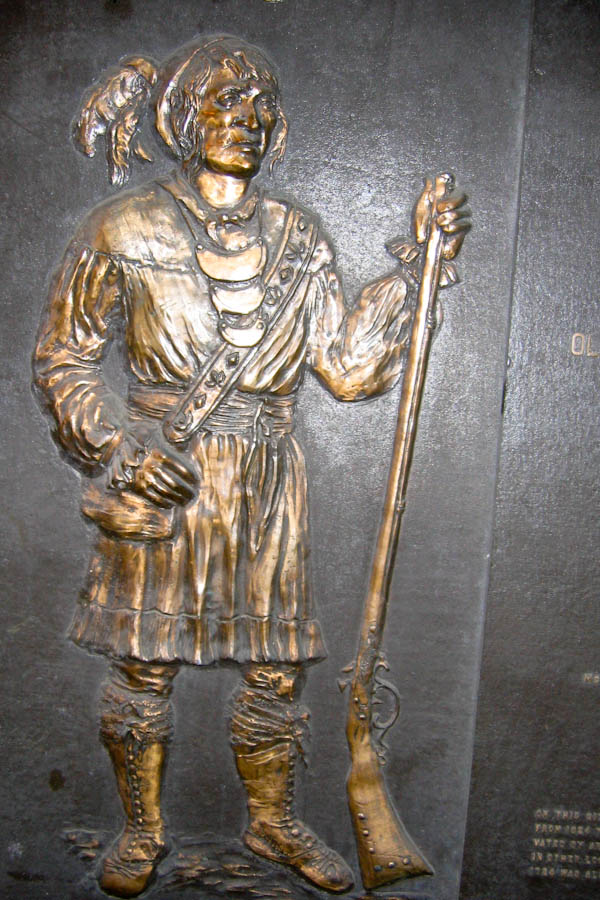Old Fort Brooke Parking Structure Memorial

- Description: A Seminole depicted on the Old Fort Brooke Municipal Parking Structure Memorial in Downtown Tampa. The Seminoles along with other Native American tribes in Florida have an extensive history surrounding forts such as Old Fort Brooke and their association with the Seminole Wars. In 1823, the treaty of Moultrie Creek was established between the Seminole Tribe and the United States Government, which designated an area of four million acres within the center of Florida as a reservation for the tribe. The area would include land from what is now Ocala to Tampa Bay, but would not include land along the coast in order to prevent any contact with other nations such as Cuba. The government would also supply farming equipment, livestock, rations for the first year, and five thousand dollars yearly for the first twenty years. A school would also be built, yet the U.S. government would be allowed to build roads across the reservation area. Another stipulation was that any slaves that had escaped and integrated into the tribe would be returned. Despite the apparent agreement, the Seminoles initially did not relocate. In response, the government established forts such as Old Fort Brooke in order to obtain better control over the area and the relocation of the tribe. However, once the Seminoles started moving onto the reservation, the rations from the government stopped coming and the seminoles began to leave the reservation. Not until 1827 was it reported that the Seminoles had moved to the reservation. The reservation would go five years without problems arising. Eventually, however, the lack of rations would cause the Seminoles to return to their previous lands once again. This along with the continuing issue of escaping slaves would cause the Congress to issue the Indian Removal Act of 1830, which called for the further relocation of the Seminole Tribe to areas west of the Mississippi. The Treaty of Payne's Landing in 1834 would allow the Seminoles three years to relocate, yet most of the chiefs refused to leave their lands despite threats from the government. After a number of battles, the U.S. government arrested the defiant chiefs while under a flag of truce. Many of the captives were able to escape, and the battles would go on to last until a third Seminole War, after which the United States would enter into its own Civil War and the Seminoles would grow tired of fighting. In the end, some Seminole groups remained in Florida and the Seminoles were offered seats in both the Florida Senate and House of Representatives. They Seminoles never accepted the positions and the seats were removed in 1885.
- Keywords: Seminole, Native American, Fort Brooke, Old Fort Brooke Municipal Parking Structure, memorial, downtown, Tampa, Florida
- TIFF File: A high resolution TIFF of Old Fort Brooke Parking Structure Memorial (20.5 Mb) is available for download. This is a very large file suitable for printing. For most on-screen purposes, you should use the image displayed on this page instead of this TIFF.
- Source: Florida Center for Instructional Technology, Exploring Florida: Social Studies Resources
for Students and Teachers (Tampa, FL: University of South Florida, 2009)
- County: Hillsborough
- Location:
- Date of Photo: 1/7/2006
- Photographer: Roy Winkelman
